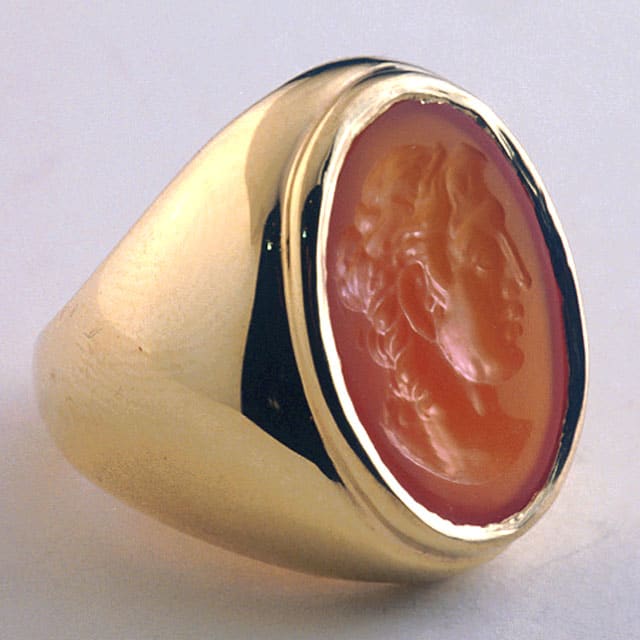Carnelian Intaglio Depicting the Bust of Hercules, 1700 CE - 1800 CE
Carnelian-Gold
FJ.6503
The art of glyptics, or carving on colored precious stones, is probably one of the oldest known to humanity. Intaglios, gems with an incised design, were made as early as...
The art of glyptics, or carving on colored precious stones, is probably one of the oldest known to humanity. Intaglios, gems with an incised design, were made as early as the fourth and third millennia BC in Mesopotamia and Aegean Islands. They display a virtuosity of execution that suggests an old and stable tradition rooted in the earliest centuries. The tools required for carving gems were simple: a wheel with a belt-drive and a set of drills. Abrasives were necessary since the minerals used were too hard for a metal edge. A special difficulty of engraving intaglios, aside from their miniature size, was that the master had to work with a mirror image in mind.
Legends recording the superhuman exploits of Hercules have delighted people for centuries; including powerful kings, such as Alexander the Great, who accomplished many 'superhuman' feats himself. For his coinage, which spanned a vast empire, Alexander used a similar image of the mythical god as seen on the coins of his father Philip III. On this lovely intaglio the natural beauty of the carnelian creates an effect where the world of myth and reality blend together in a warm glow.
Legends recording the superhuman exploits of Hercules have delighted people for centuries; including powerful kings, such as Alexander the Great, who accomplished many 'superhuman' feats himself. For his coinage, which spanned a vast empire, Alexander used a similar image of the mythical god as seen on the coins of his father Philip III. On this lovely intaglio the natural beauty of the carnelian creates an effect where the world of myth and reality blend together in a warm glow.
